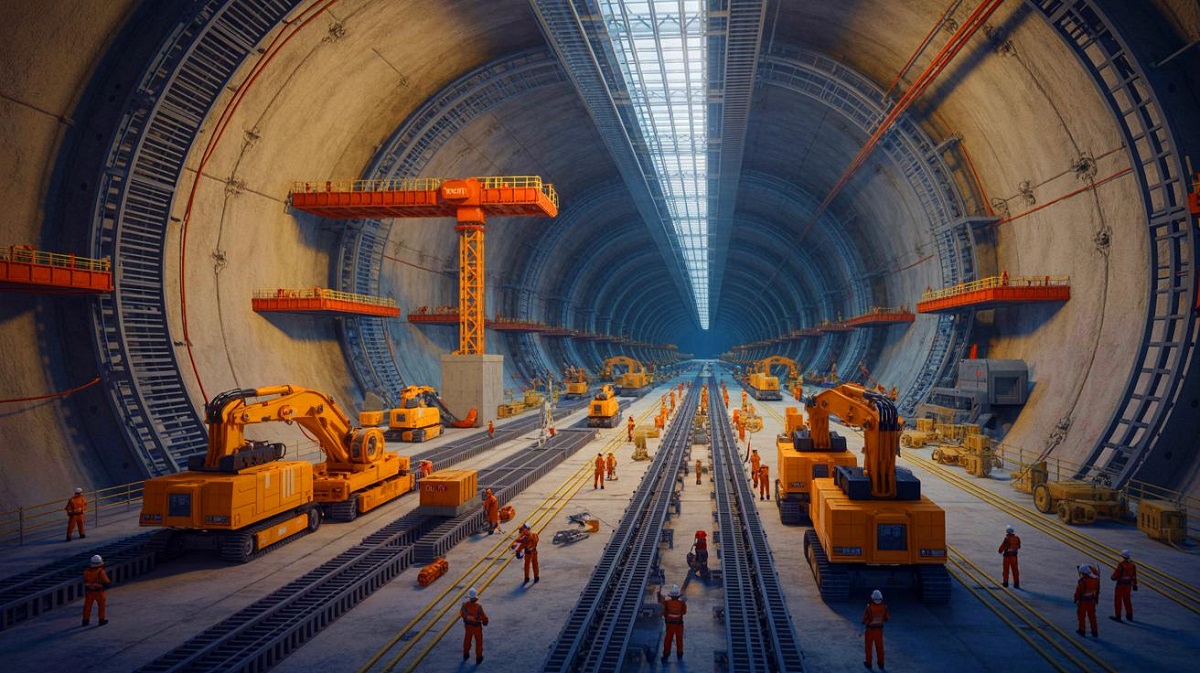A Subterranean Colossus near the Capital
Newly examined satellite shots reveal a sweeping underground build-out on the outskirts of Beijing, pointing to a covert complex of unusual scale. The emerging network appears designed for hardened command, control, and sustainment functions under layers of rock and reinforced concrete. Analysts see a deliberate effort to shield critical assets from precision strikes and surveillance, in line with larger Chinese modernization goals.
The concept is not entirely new, but the execution looks ambitious. China’s historical investment in tunneled infrastructure and blast-resistant facilities is being extended to a vast subterranean system that could support sustained operations even under heavy duress.
Strategic Ripples Across Asia
The location near the capital suggests a central node for command, logistics, and continuity of government, accelerating response times while complicating deterrence calculations for rivals. For regional states, the message is clear: Beijing is preparing for high-end contingencies and attrition, not just peacetime signaling.
Neighboring governments are likely to reassess their posture, procurement timelines, and alliances. The scale of the project hints at a long-game approach to strategic resilience and escalation management, potentially reshaping how crises are deterred or fought.
Engineering Feats and Dual-Use Fears
The engineering challenge is formidable, from excavation and ventilation to seismic resilience and electromagnetic hardening. Such projects demand advanced tunneling systems, precision geotechnical mapping, and intricate redundancies to keep command nodes connected under stress.
That technical prowess cuts both ways. On one hand, it showcases innovation and self-sufficiency; on the other, it deepens worries over coercion and power projection masked behind defensive rhetoric. Civil-military blur is inescapable when hardened complexes can support both protective and offensive missions.
Signals to Washington and Beyond
For the United States, the build sends a signal: critical Chinese nodes may be survivable against first-strike or long-range conventional attacks. That complicates U.S. targeting doctrine and crisis messaging, potentially raising thresholds for escalation while narrowing windows for coercive leverage.
Allies and partners—Japan, South Korea, Australia, and India—will parse this shift as they refine concepts like distributed operations, integrated air and missile defense, and undersea deterrence. The emerging picture is one of long-term competition that prioritizes endurance and dispersion.
What It Could Enable
- Sustained, hardened command-and-control during kinetic conflict
- Protected storage of munitions, fuel, and sensitive systems
- Rapid reconstitution of communications and decision-making nodes
- Concealment of force movements and strategic assets
- Enhanced capacity for surprise or ambiguity in crisis scenarios
The Transparency Dilemma
Official disclosures remain scarce, feeding speculation and mistrust. Absent clarity on purpose, scale, and rules of use, regional interlocutors will default to worst-case assumptions, accelerating hedging and arms buildups.
Confidence-building measures could help, but only if paired with verifiable steps—limited briefings, hotlines, or narrowly scoped inspections—that reduce the chance of miscalculation without exposing core secrets.
A Quote from the Strategic Debate
“Hardening buys time, and time buys options—but it also convinces opponents that signals won’t register, pushing everyone toward louder and riskier moves.”
A New Baseline for Deterrence
Subterranean capacity lowers vulnerability to precision strikes, which in turn affects how signals are sent and received in a fast-moving crisis. If leadership believes its nerves and nodes can survive, it may adopt bolder postures or longer bargaining timelines.
Conversely, adversaries may seek offsets—cyber intrusions, undersea disruption, or long-endurance surveillance—meant to pierce ambiguity and restore leverage without immediate escalation.
The Road Ahead
This build is best read as a structural investment in staying power and continuity, not a short-term gambit for quick gains. It underscores China’s pursuit of strategic depth, complicating any plan that relies on shock and paralysis.
For the region, the prudent answer is balance: strengthen resilience, invest in interoperability, and keep diplomatic channels open. The alternative is a cycle of secrecy and counter-secrecy that erodes stability precisely when it is most needed.

